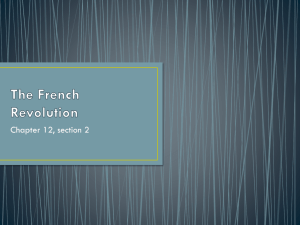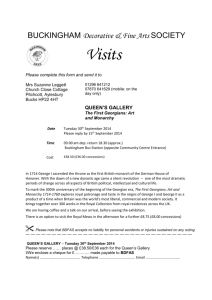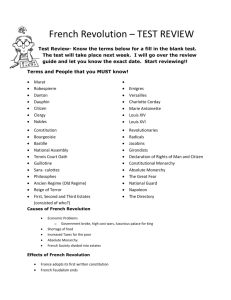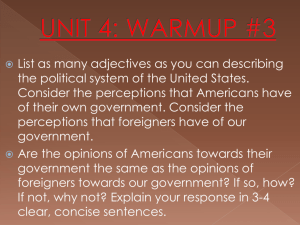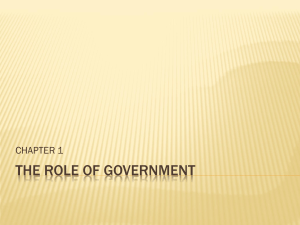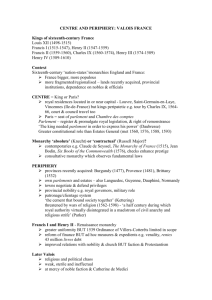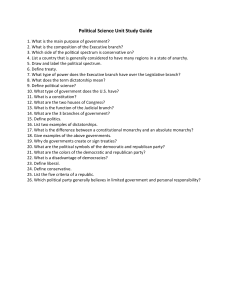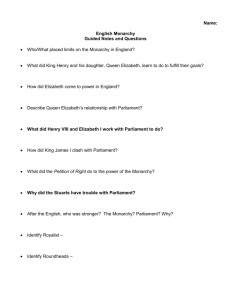‘Monarchy & decline’ lecture notes Chronology Victoria (1837-1901)
advertisement
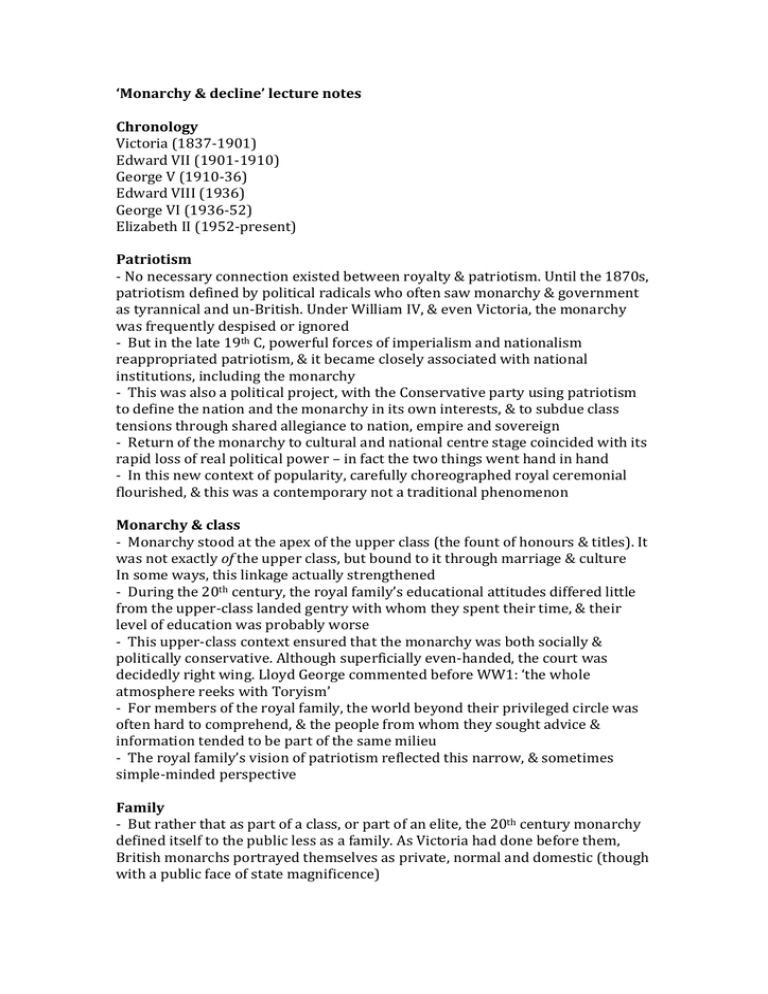
‘Monarchy & decline’ lecture notes Chronology Victoria (1837-1901) Edward VII (1901-1910) George V (1910-36) Edward VIII (1936) George VI (1936-52) Elizabeth II (1952-present) Patriotism - No necessary connection existed between royalty & patriotism. Until the 1870s, patriotism defined by political radicals who often saw monarchy & government as tyrannical and un-British. Under William IV, & even Victoria, the monarchy was frequently despised or ignored - But in the late 19th C, powerful forces of imperialism and nationalism reappropriated patriotism, & it became closely associated with national institutions, including the monarchy - This was also a political project, with the Conservative party using patriotism to define the nation and the monarchy in its own interests, & to subdue class tensions through shared allegiance to nation, empire and sovereign - Return of the monarchy to cultural and national centre stage coincided with its rapid loss of real political power – in fact the two things went hand in hand - In this new context of popularity, carefully choreographed royal ceremonial flourished, & this was a contemporary not a traditional phenomenon Monarchy & class - Monarchy stood at the apex of the upper class (the fount of honours & titles). It was not exactly of the upper class, but bound to it through marriage & culture In some ways, this linkage actually strengthened - During the 20th century, the royal family’s educational attitudes differed little from the upper-class landed gentry with whom they spent their time, & their level of education was probably worse - This upper-class context ensured that the monarchy was both socially & politically conservative. Although superficially even-handed, the court was decidedly right wing. Lloyd George commented before WW1: ‘the whole atmosphere reeks with Toryism’ - For members of the royal family, the world beyond their privileged circle was often hard to comprehend, & the people from whom they sought advice & information tended to be part of the same milieu - The royal family’s vision of patriotism reflected this narrow, & sometimes simple-minded perspective Family - But rather that as part of a class, or part of an elite, the 20th century monarchy defined itself to the public less as a family. As Victoria had done before them, British monarchs portrayed themselves as private, normal and domestic (though with a public face of state magnificence) - The (largely deferential & generally right-leaning) press, radio and cinema were hugely important in propagandising this idea, from the 1890s to the 1980s - Represented as a family, the monarchy could symbolise the national family (NB, George V’s annual Christmas radio broadcasts from 1932) - The monarchy could thus hover above the class tensions & inequalities that might otherwise have destroyed it - the monarch could thus symbolise the nation (& the empire), whether leading the mourning on Remembrance Sunday, or celebrating the nation’s triumphs Continuity - For Britain this period was hardly one of continuity: urbanisation, industrial unrest, widening franchise, world wars etc. The nation required a unifying symbol of permanence & cohesion, & this was supplied by the monarchy - Late 19th century royal ceremonial was thus continued, & presented as age-old & timeless, associating the crown with stability, tradition & a shared history - Ironically, though, it has only been through new technologies that the monarchy’s image of antiquity has been able to reach & engage the public, from the mass-produced souvenirs marking Victoria’s Diamond Jubilee, to the televised marriage of Charles & Diana in 1981 - Continuity also conveyed through belief that the monarchy embodied a cluster of core values: duty, service, honesty, courage, common sense, tolerance, decency - And indeed these were guiding principles for most of the century’s monarchs Strains on continuity - In recent decades, though, cracks have shown in this performance of continuity - Queen Elizabeth II crowned not as Empress of India or ruler of the British Dominions, as her predecessors had been, but as Head of the Commonwealth - The years that followed brought the Suez crisis, economic decline, the Northern Ireland situation, wrangles over Europe, loss of international influence - To some extent British decline strengthened the monarchy – people took pride in it as one thing that still made the nation distinctive - However, the monarchy was becoming more of an English than a British institution – dramatic fall in its relevance to Scottish national identity - Declining relevance of royal family to younger generations in England - Signs, too, that the personal style of the royal family has become less appealing. 1950s-1990s: royal glamour/mystery/excitement leaking away. 1958: Queen’s Christmas message attracted 30 million domestic viewers. 2001: 8.7 million Royal family & Diana, Princess of Wales - By maintaining its traditional image, the royal family was by the 1990s beginning to peel away from British society - This opened up a space in national identity, & the British, & above all the English, found in Diana the perfect image to fill it. She seemed the only royal with whom modern Britons could relate (open, informal, warm and emotional, rather than cold, repressed and distant). Seemed to represent the changes that had taken place in British society. ‘The People’s Princess’, cult of celebrity etc - Diana made Windsors appear remote from the nation they claimed to embody - Her death in 1997, ‘the most traumatic British bereavement of the 20th century’ - Blair government tried to drag monarchy back into communion with the nation - Careful programme of rehabilitation for the Queen began with her & Prince Philip’s golden wedding anniversary, 1997: caring, friendly, down-to-earth etc - In the years that followed, most Britons have wanted the monarchy to be modernized not demolished.
